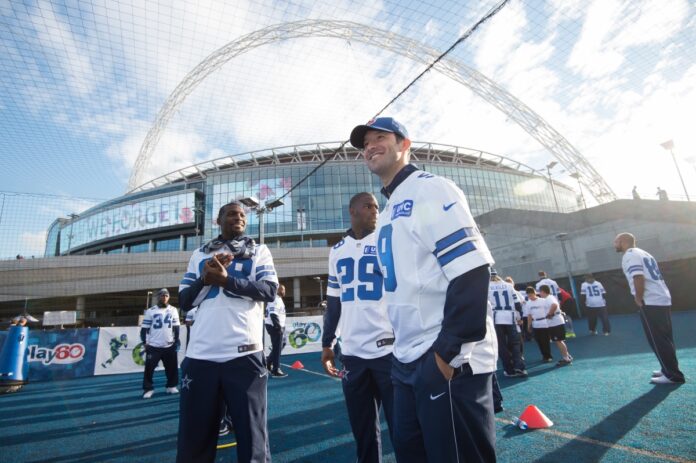This week, Jason Garrett, Jerry Jones, and Tony Romo expressed optimism about Romo’s potential to take the field in London against the Jacksonville Jaguars.
Following a severe blow to his back against the Washington Redskins two weeks ago, Romo reportedly sustained fractures in two small transverse process bones.
Consequently, the Cowboys determined it was in his best interest to take a break for recovery.
Romo’s unwavering courage and resilience have been consistently demonstrated.
He has repeatedly shown willingness to put his body on the line for the sake of his team, fans, and franchise.
His fortitude as a quarterback is unmatched. Having experienced the same herniated disk injury for which Romo underwent surgery this offseason, I can empathize with his pain level, even if the new injury is officially declared unrelated.
While Romo’s back condition may understandably concern Cowboys fans, my primary worry lies in how he performed in the critical moments of the Redskins game.
It suggests that if given the opportunity, he will continue to play through this injury.
During the Washington game, Romo seemed to struggle to read the field effectively.
The Redskins’ defensive coordinator, Jim Haslett, consistently loaded the box to thwart the run, applying various pressures to disrupt and confound Romo.
A notable instance occurred in the game’s final two minutes, with the Dallas Cowboys in a position for a potential comeback—reminiscent of the one Romo orchestrated a year prior against Washington when he initially suffered a herniated disc in his back.
On the second down, Washington executed a zone pressure that caught Romo off guard.
In the accompanying photo, the center can be seen determining the offensive line’s assignment, leaving the responsibility of blocking the linebacker on the right to running back DeMarco Murray.
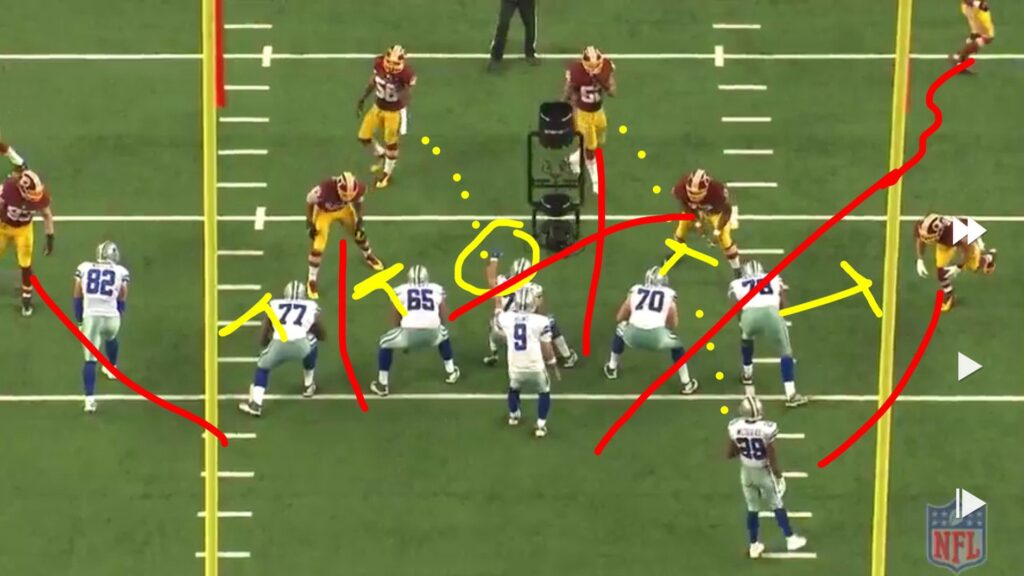
Brandon Meriweather, the Redskins’ safety, shifted to the weak side, clearly signaling that he posed a potential rushing threat.
The protection scheme should have been adjusted to account for Meriweather—or, at the very least, Romo should have been aware of his presence.
As the play developed, Meriweather delivered a powerful hit to Romo, resulting in a fumble that Dallas was fortunate to regain (as shown below).

On the subsequent play, Romo successfully converted a crucial third down, putting the Cowboys back in two-minute mode.
However, he faced another setback due to a poor reaction to pressure.
Haslett persisted in employing all-out pressures, compelling teams to release the ball swiftly due to a shortage of players in protection.
When facing “all-out” blitzes, teams typically have designed quick throws or checks/audibles that allow the QB to shift to a more favorable play.
Romo altered the first all-out blitz routes, resulting in a short completion.
Rather than targeting Dez Bryant, who was in single coverage on the backside, Romo opted for a throw to Terrence Williams on the field.
While Williams is a capable receiver, he may not possess the explosive edge that Dez Bryant brings.
A short gain with no timeouts expended valuable time. In two-minute drills, time is of the essence, followed closely by field position.
In critical moments, it’s imperative to utilize players who offer the highest probability of success, and that player is Dez Bryant.
In consecutive plays, Washington unleashed pressures that presented a significant opportunity for Romo to make a big play.
However, Dallas settled for a short completion and an incomplete pass that led to an intentional grounding penalty, neither of which was directed toward Dez Bryant.
Lo and behold, on the ensuing play, the same blitz was employed again.
This time, Romo executed a quick wide receiver screen to Terrence Williams on the outside rather than targeting Dez Bryant.
While screens can be effective against blitzes, they prove challenging against “all-out” blitzes, as defensive backs are quicker to react to the wide receivers in man-to-man coverage.
Moreover, setting up blocks becomes more arduous with the added pressure from other players and rushers.
Regrettably, this play only resulted in a modest gain of about five yards and proved to be yet another wasted opportunity.
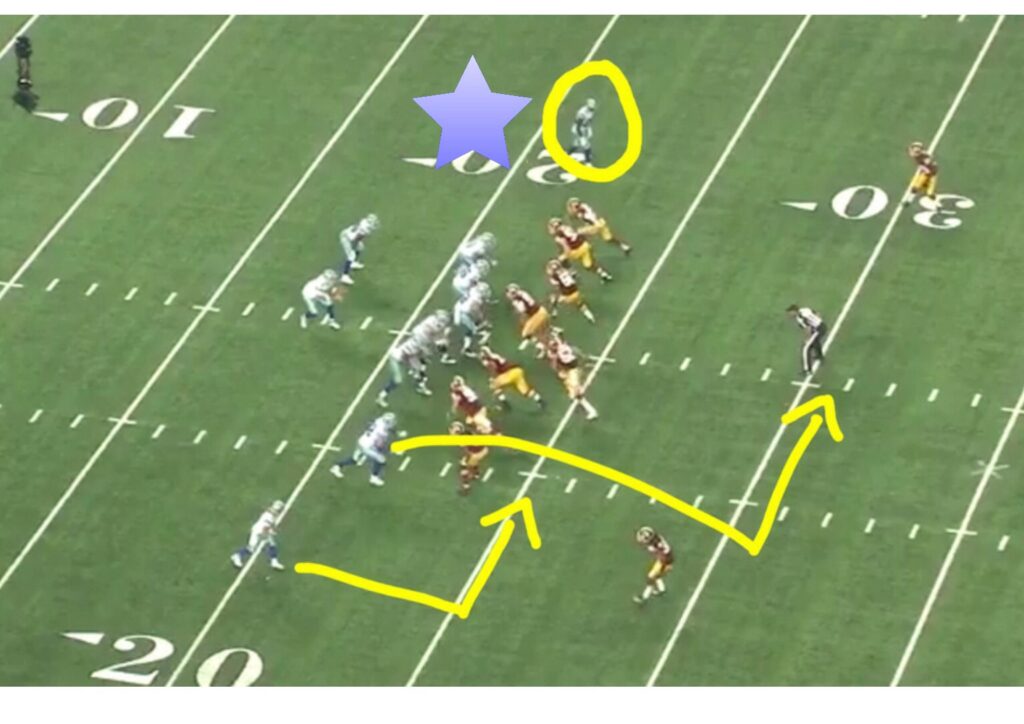
On the subsequent play, Romo hurriedly attempted to signal a change in the route to Williams, who was now in single coverage.
Williams, following his original instruction, ran downfield on a deeper route.
Under additional pressure, Romo threw a pass he believed to be shorter than intended.
While miscommunications can occur, especially with young players in the NFL, they should be rare among seasoned veterans, particularly those who have played together for an extended period.
Once again, my inquiry revolves around Romo’s decision-making. Why did he feel the need to signal a different route?
The Cowboys needed a substantial gain to position themselves for a field goal.
Given their success throughout the game, it should have been anticipated that Washington would continue their effective blitzing.
And yet, still no targeting of Dez Bryant? He is one of the premier wide receivers in the NFL, and the game hangs in the balance.
That should be the primary target, especially when matched against a rookie corner.
The decision-making here is perplexing. One would expect Romo to exercise more strategic thinking at this stage in his career.
In overtime, with the game hanging in the balance on 4th down, Washington faked a blitz but instead transitioned into a match zone coverage (as depicted below).
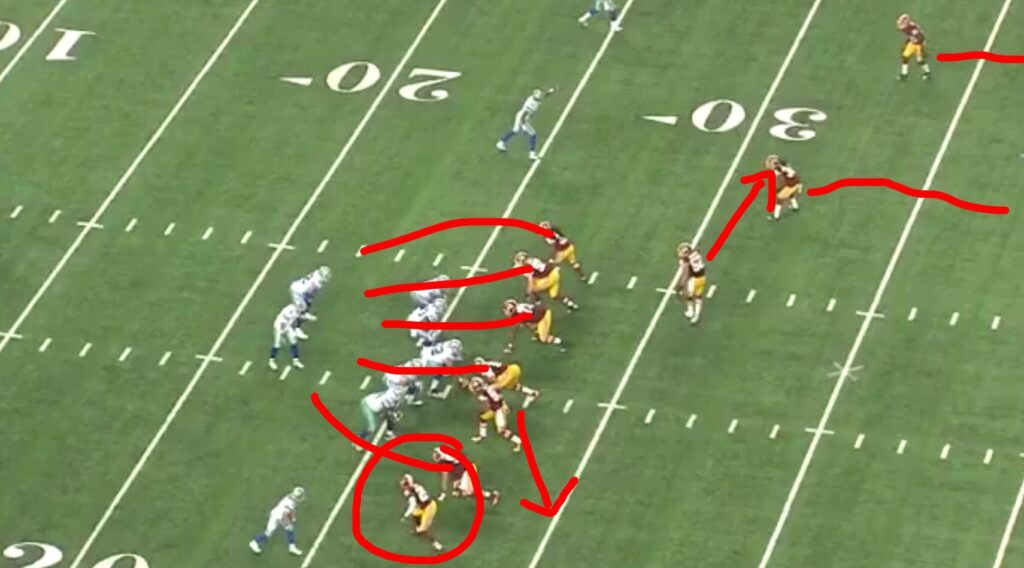
It seemed as though a fire alarm had sounded. For some unknown reason, Romo was determined to exit a perfectly secure, fire-proof pocket.
He had ample time; there was no necessity for a complete 180-degree turn and frantic scrambling.
Eventually, he broke free from the pocket and tried to connect with Dez Bryant (at last).
However, it was a case of too little, too late (as shown below); the pass fell incomplete, sealing the game’s fate.
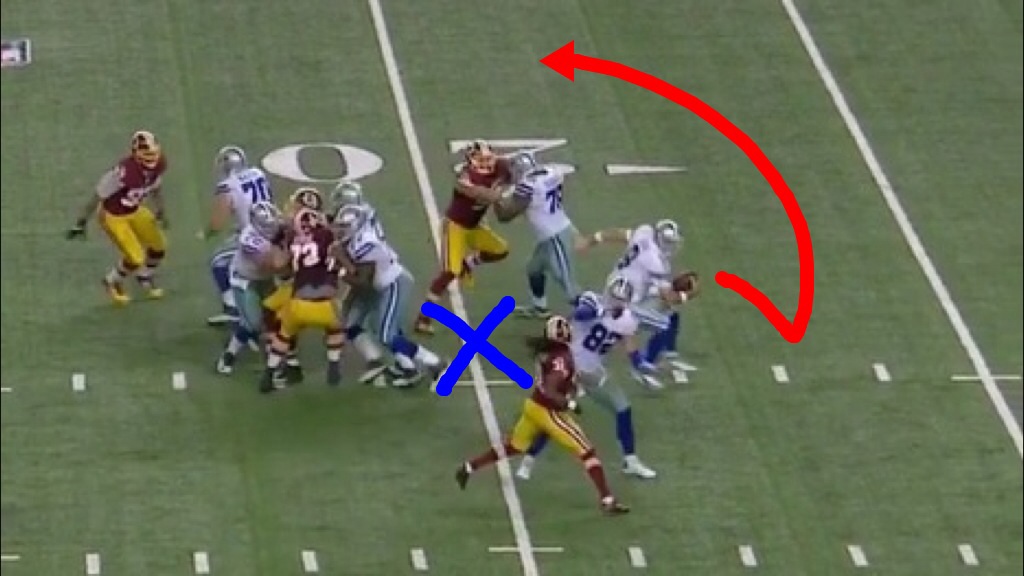
If Romo had stayed in the pocket and held his ground, he would have spotted Beasley and Williams streaking open down the middle of the field.
It seems that the desire to avoid a hit led to needless panic.
In 2014, significant improvements have been made to the entire offense surrounding Tony Romo.
Unfortunately, his decision-making in late-game situations has not seen the same progress.
In my opinion, if the Cowboys aim for the Super Bowl, Romo will need to address this issue in the second half of the season.
Two weeks ago, Romo bravely re-entered the game, risking a potentially season-ending injury.
His response to pressure reflected the actions of someone who should avoid taking hits.
Now, there’s a possibility he’ll step back onto the field, notably against a 1-8 Jaguars team.
It might be wiser for Romo to take another week to heal. The question remains: can his decision-making evolve under these circumstances?
The Dallas Cowboys have enjoyed a remarkably successful start, surpassing expectations in recent franchise history.
However, fortunes in the NFL can shift rapidly. Without improved decision-making from Romo, the Cowboys’ trajectory could change even more swiftly.

